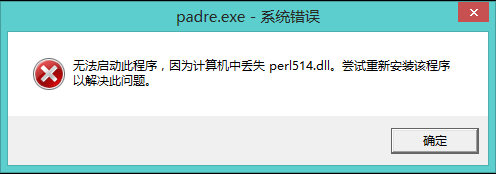From: http://hi.baidu.com/wangj998/blog/item/3a8d63e9b5b7c035b90e2d3b.html
exists
[root@localhost~]# cat 1.pl
#!/usr/bin/perl -w
use strict;
my $a;
my $b="";
my $c=1;
print "a ok/n" if ( defined $a );
print "b ok/n" if ( defined $b );
print "c ok/n" if ( defined $c );
my %hash=(
'aa' => 'bejing',
);
if ( exists $hash{'aa'} )
{
print "aa exists/n";
}
else
{
print "aa not exists/n";
}
结果:
[root@localhostr ~]# perl -w 1.pl
b ok
c ok
aa exists
# a 没有赋值过值,所以是undef ,b赋值为空,空也是赋值,c赋值,哈希存在aa值
defined是用来测试一个变量是否是undef的,也就是说这个变量一定有,只是不知道对这个变量赋过值没有
exists一般是用来测试hash表中是否存在一个变量的
exists判断散列或者数组中某值是否存在,defined判断一个值是不是undef。
存在的也有可能是undef。
defined 一般用来判断变量是非赋值或文件是否都结尾,exists 判断数组哈希是否存在某个变量
其他网络参考
defined
-
defined
Returns a Boolean value telling whether EXPR has a value other than the undefined value
undef. If EXPR is not present,$_will be checked.Many operations return
undefto indicate failure,end of file,system error,uninitialized variable,and other exceptional conditions. This function allows you to distinguishundeffrom other values. (A simple Boolean test will not distinguish amongundef,zero,the empty string,and"0",which are all equally false.) Note that sinceundefis a valid scalar,its presence doesn't necessarily indicate an exceptional condition:popreturnsundefwhen its argument is an empty array,or when the element to return happens to beundef.You may also use
defined(&func)to check whether subroutine&funchas ever been defined. The return value is unaffected by any forward declarations of&func. Note that a subroutine which is not defined may still be callable: its package may have anAUTOLOADmethod that makes it spring into existence the first time that it is called -- see perlsub .Use of
definedon aggregates (hashes and arrays) is deprecated. It used to report whether memory for that aggregate has ever been allocated. This behavior may disappear in future versions of Perl. You should instead use a simple test for size:When used on a hash element,it tells you whether the value is defined,not whether the key exists in the hash. Use "exists" for the latter purpose.
Examples:
- print if defined $switch{'D'};
- print "$val/n" while defined ($val = pop (@ary));
- die "Can't readlink $sym: $!"
- unless defined ($value = readlink $sym);
- sub foo { defined &$bar ? &$bar(@_) : die "No bar"; }
- $debugging = 0 unless defined $debugging;
Note: Many folks tend to overuse
defined,and then are surprised to discover that the number0and""(the zero-length string) are,in fact,defined values. For example,if you say- "ab" =~ /a(.*)b/;
The pattern match succeeds,and
$1is defined,despite the fact that it matched "nothing". It didn't really fail to match anything. Rather,it matched something that happened to be zero characters long. This is all very above-board and honest. When a function returns an undefined value,it's an admission that it couldn't give you an honest answer. So you should usedefinedonly when you're questioning the integrity of what you're trying to do. At other times,a simple comparison to0or""is what you want.
exists
-
exists EXPR
Given an expression_r_r_r that specifies a hash element or array element,returns true if the specified element in the hash or array has ever been initialized,even if the corresponding value is undefined.
- print "Exists/n" if exists $hash{$key};
- print "Defined/n" if defined $hash{$key};
- print "True/n" if $hash{$key};
- print "Exists/n" if exists $array[$index];
- print "Defined/n" if defined $array[$index];
- print "True/n" if $array[$index];
A hash or array element can be true only if it's defined,and defined if it exists,but the reverse doesn't necessarily hold true.
Given an expression_r_r_r that specifies the name of a subroutine,returns true if the specified subroutine has ever been declared,even if it is undefined. Mentioning a subroutine name for exists or defined does not count as declaring it. Note that a subroutine which does not exist may still be callable: its package may have an
AUTOLOADmethod that makes it spring into existence the first time that it is called -- see perlsub .Note that the EXPR can be arbitrarily complicated as long as the final operation is a hash or array key lookup or subroutine name:
- if ( exists $ref->{A}->{B}->{$key}) { }
- if ( exists $hash{A}{B}{$key}) { }
- if ( exists $ref->{A}->{B}->[$ix]) { }
- if ( exists $hash{A}{B}[$ix]) { }
- if ( exists &{$ref->{A}{B}{$key}}) { }
Although the deepest nested array or hash will not spring into existence just because its existence was tested,any intervening ones will. Thus
$ref->{"A"}and$ref->{"A"}->{"B"}will spring into existence due to the existence test for the $key element above. This happens anywhere the arrow operator is used,including even:This surprising autovivification in what does not at first--or even second--glance appear to be an lvalue context may be fixed in a future release.
Use of a subroutine call,rather than a subroutine name,as an argument to exists() is an error.

 1. 如何去重 #!/usr/bin/perl use strict; my %hash; while(...
1. 如何去重 #!/usr/bin/perl use strict; my %hash; while(... 表的数据字典格式如下:如果手动写MySQL建表语句,确认麻烦,...
表的数据字典格式如下:如果手动写MySQL建表语句,确认麻烦,... 巡检类工作经常会出具日报,最近在原有日报的基础上又新增了...
巡检类工作经常会出具日报,最近在原有日报的基础上又新增了...